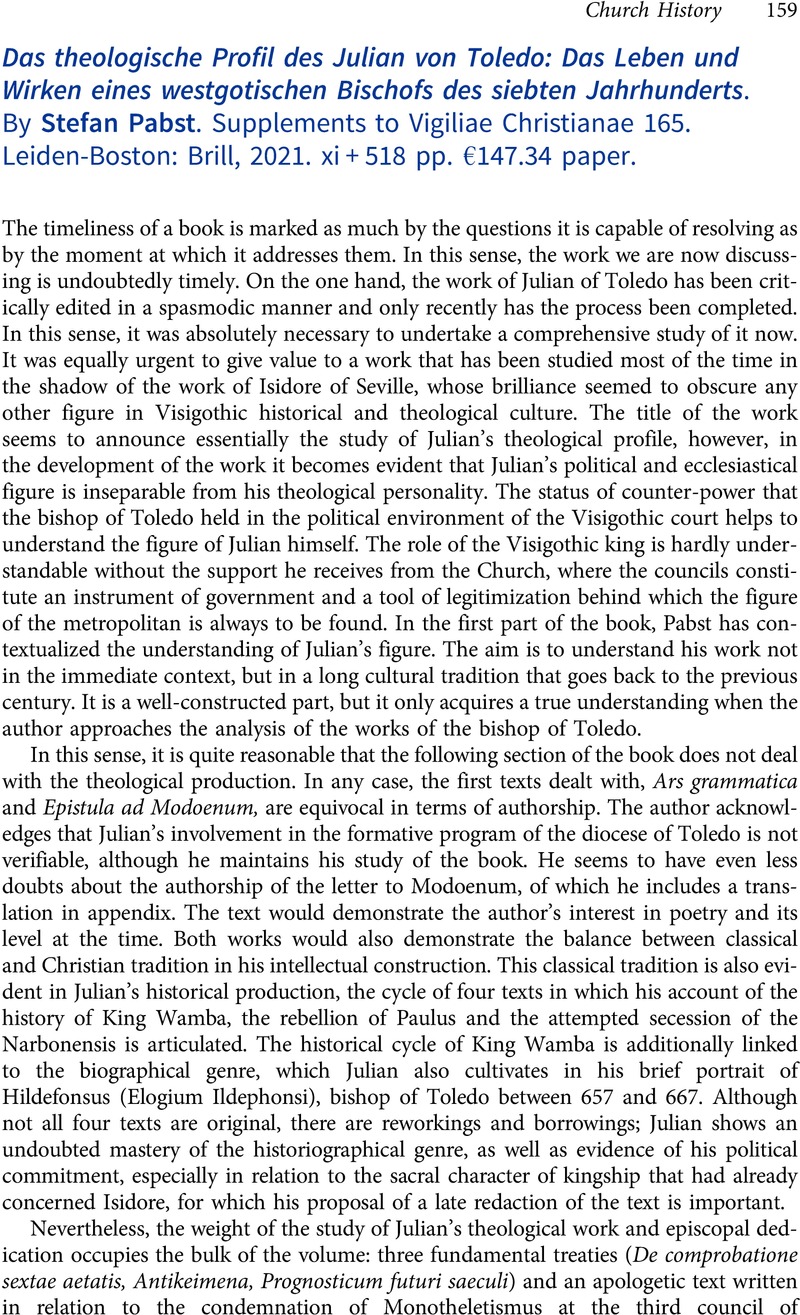No CrossRef data available.
Article contents
Das theologische Profil des Julian von Toledo: Das Leben und Wirken eines westgotischen Bischofs des siebten Jahrhunderts. By Stefan Pabst. Supplements to Vigiliae Christianae 165. Leiden-Boston: Brill, 2021. xi + 518 pp. €147.34 paper.
Review products
Das theologische Profil des Julian von Toledo: Das Leben und Wirken eines westgotischen Bischofs des siebten Jahrhunderts. By Stefan Pabst. Supplements to Vigiliae Christianae 165. Leiden-Boston: Brill, 2021. xi + 518 pp. €147.34 paper.
Published online by Cambridge University Press: 28 July 2023
Abstract
An abstract is not available for this content so a preview has been provided. Please use the Get access link above for information on how to access this content.

Information
- Type
- Book Reviews and Notes
- Information
- Copyright
- Copyright © The Author(s), 2023. Published by Cambridge University Press on behalf of American Society of Church History

